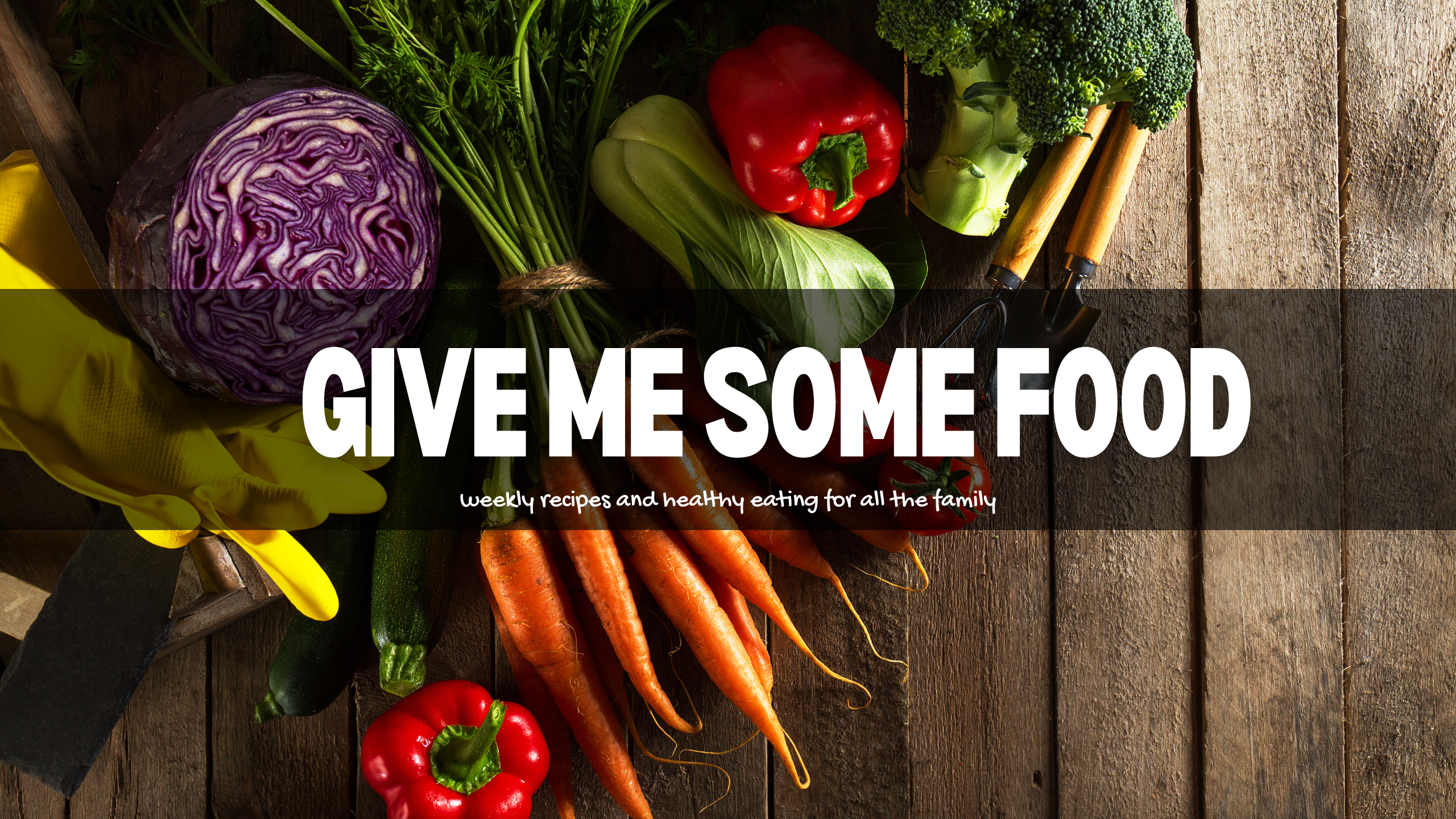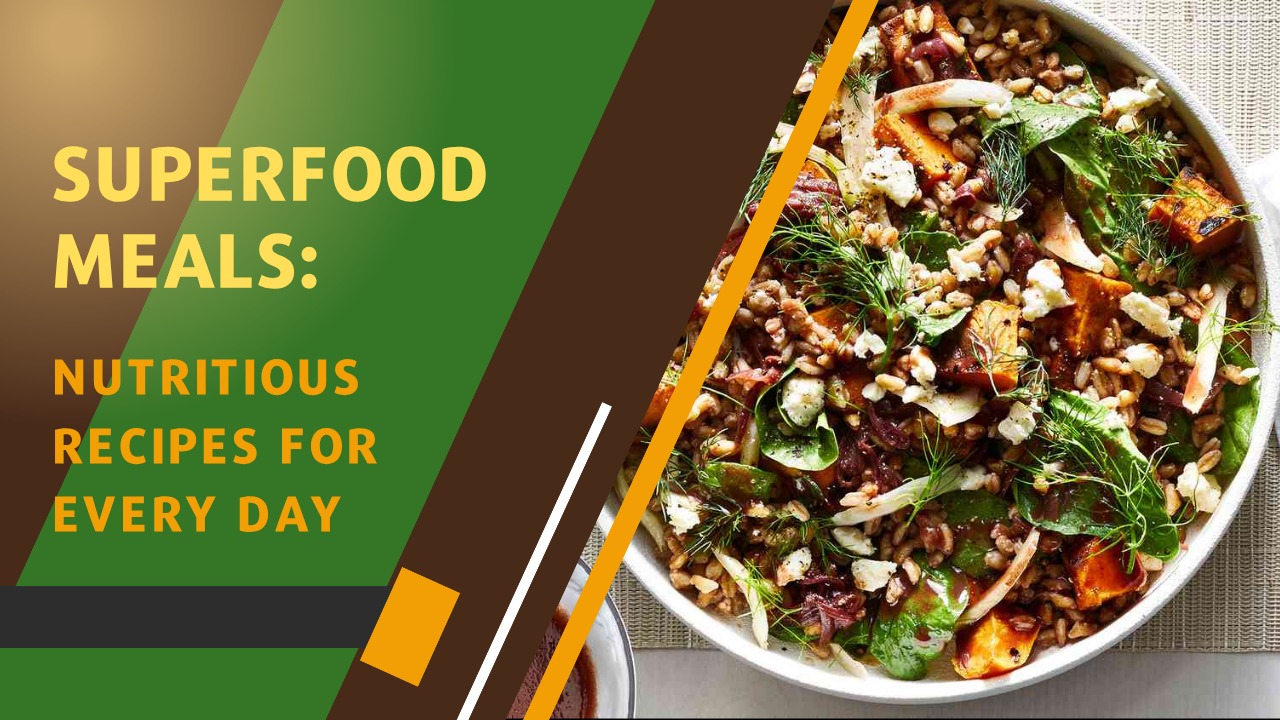Superfood meals are more than just a health trend — they’re a powerful, sustainable way to nourish your body using nature’s best. Packed with antioxidants, essential nutrients, fiber, and healthy fats, superfood meals help support immunity, boost energy, and improve overall well-being. Whether you’re aiming to lose weight, fight inflammation, or just eat cleaner, these meals offer a balanced and delicious solution.
Creating superfood meals is simple when you focus on whole ingredients like leafy greens, lean proteins, healthy fats, berries, seeds, and spices. From quinoa bowls to turmeric soups and berry chia puddings, each meal becomes a flavorful opportunity to support your health goals. They’re easy to customize and perfect for any time of day — breakfast, lunch, or dinner.
By slowly incorporating superfood ingredients into your daily routine, you’ll begin to notice long-lasting benefits. Over time, these superfood meals can lead to better energy, glowing skin, improved digestion, and a healthier lifestyle overall.
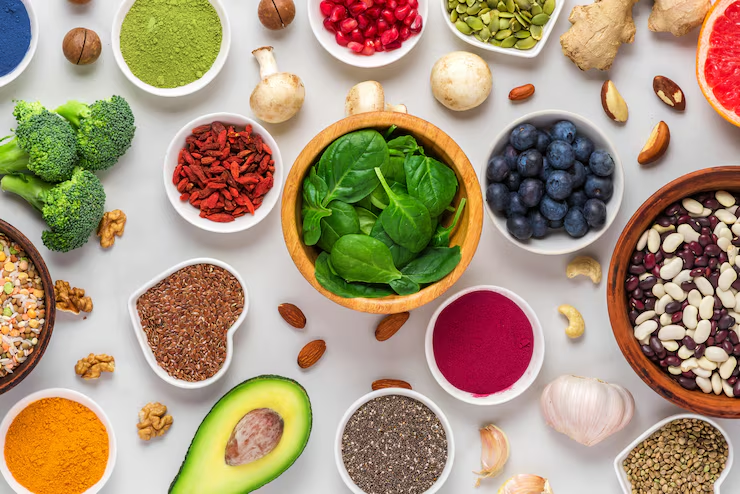
What Are Superfoods ?
Superfoods are a category of foods considered to be especially rich in health-promoting compounds, including:
Antioxidants (to fight free radicals)
Phytonutrients (plant-based nutrients with disease-fighting properties)
Essential fatty acids
High-quality proteins
Vitamins & minerals
Examples of Superfoods:
Leafy greens (kale, spinach)
Berries (blueberries, goji berries, acai)
Seeds (chia, flaxseed, hemp)
Whole grains (quinoa, amaranth)
Fatty fish (salmon, sardines)
Nuts (almonds, walnuts)
Herbs and spices (turmeric, ginger)
Why Eat Superfood Meals ?
Superfood meals aren’t just a passing trend—they’re a long-term investment in your health and well-being. While they may appear popular on social media, the real value of these meals lies in their ability to nourish your body with essential nutrients that support daily function and long-term vitality. They provide a powerful way to prevent disease and promote balance from within.
By regularly including ingredients like leafy greens, berries, seeds, and whole grains, you create superfood meals that fuel your body with antioxidants, fiber, vitamins, and healthy fats. These nutrients help reduce inflammation, strengthen your immune system, and enhance mental clarity—all essential for maintaining energy and resilience in a fast-paced world.
The best part? Superfood meals are simple to prepare, incredibly flexible, and endlessly customizable. Whether you’re aiming for weight loss, better digestion, or just cleaner eating, these meals provide the foundation for a vibrant, energized, and health-focused lifestyle that lasts.
Benefits:
Boost immune function
Support heart and brain health
Reduce inflammation
Improve digestion and gut health
Increase energy and focus
Maintain healthy skin and hair
Manage weight effectively
Reduce risk of chronic diseases
When Should You Eat Superfood Meals ?
The beauty of superfood meals lies in their incredible versatility. They can be adapted to suit any time of day, making healthy eating convenient and enjoyable. Whether you’re rushing through a busy morning or winding down after a long day, there’s always a way to fit nutrient-packed ingredients into your meals.
Start your day with a vibrant superfood smoothie bowl featuring spinach, berries, chia seeds, and almond butter for a powerful energy boost. For lunch, a quinoa salad loaded with roasted vegetables, avocado, and a lemon-tahini dressing makes a satisfying and nourishing option. These superfood meals are not only rich in nutrients but also bursting with flavor and color.
In the evening, opt for a warming turmeric lentil soup or a leafy green stir-fry with tofu and ginger. These balanced superfood meals promote digestion, relaxation, and recovery, helping you end your day on a wholesome note while supporting long-term wellness goals.
Ideal Times:
Morning: For a nutrient-rich start to fuel your day.
Post-workout: To replenish and repair muscles.
Lunch: To sustain energy throughout your workday.
Dinner: Light, detoxifying superfood meals to promote rest and digestion.
How to Incorporate Superfoods into Your Meals
Incorporating superfoods into your daily routine doesn’t require a complete diet overhaul—small, simple changes can lead to big results. Start by identifying nutrient-rich ingredients like leafy greens, berries, seeds, whole grains, and healthy fats that you enjoy and can easily add to your existing meals. These superfoods help turn ordinary dishes into powerful, health-boosting superfood meals.
Swap white rice with quinoa, sprinkle chia or flaxseeds on your oatmeal, and blend spinach into smoothies. Replace processed snacks with fresh fruits or nuts, and use herbs and spices like turmeric and ginger for added flavor and wellness benefits. These easy adjustments enhance the nutritional value of your meals without sacrificing taste.
Over time, these small steps will naturally evolve into a routine of preparing balanced, nourishing superfood meals. The key is consistency—by gradually making these ingredients part of your lifestyle, you’ll enjoy better energy, improved health, and a more vibrant relationship with food.
You don’t need a complete diet overhaul to get started. Incorporating superfoods is more about adding the good stuff than eliminating the bad. Start small by:
Swapping white rice for quinoa.
Using Greek yogurt instead of sour cream.
Adding chia or flaxseeds to smoothies or oatmeal.
Cooking with turmeric and ginger.
Replacing sugary snacks with berries and nuts.
Top Tips for Building Delicious and Nutritious Superfood Meals
Now that we understand the what, why, when, and how — let’s dive into actionable tips. Below are 8 powerful tips to help you prepare meals that are not only full of superfoods but also delicious, satisfying, and easy to make.
Build Your Base with Whole Grains
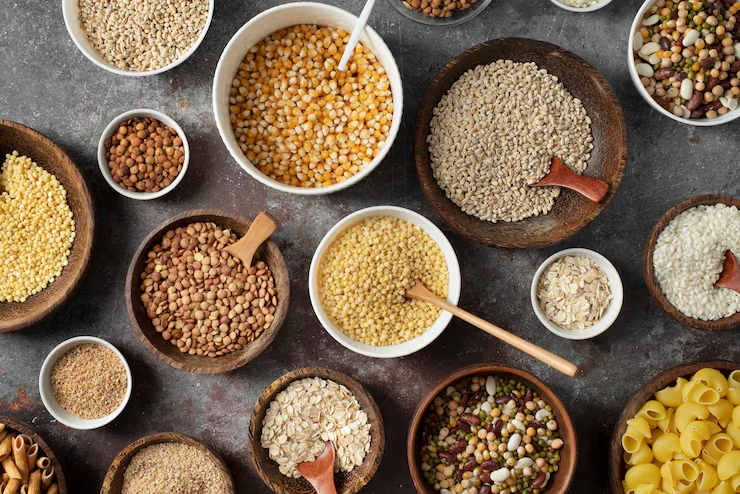
Whole grains are a vital foundation for creating balanced and nourishing superfood meals. Unlike refined grains, whole grains retain their bran, germ, and endosperm, providing essential nutrients such as fiber, B vitamins, magnesium, and iron. They help regulate blood sugar, support digestion, and keep you feeling full longer — all key components of a healthy lifestyle.
Incorporating whole grains into your superfood meals is simple and versatile. Quinoa, for example, is a complete protein and works well as a base for grain bowls. Brown rice, millet, farro, or amaranth can be added to salads, soups, or stir-fries to boost texture and nutrition. These grains serve as a hearty, nutrient-rich canvas for layering vegetables, proteins, and healthy fats.
By starting your superfood meals with whole grains, you’re laying the groundwork for a dish that’s not only satisfying but also energizing and beneficial for long-term health. It’s a smart and delicious way to eat clean.
Whole grains are the perfect canvas for superfood meals. They’re fiber-rich, filling, and contain essential nutrients like B vitamins, magnesium, and iron.
Best Superfood Grains:
Quinoa – complete protein, gluten-free, rich in fiber and magnesium.
Amaranth – high in protein and calcium.
Millet – great for digestion and energy.
Brown rice – provides sustained energy.
Example Meal:
Superfood Grain Bowl
Quinoa base
Roasted sweet potato
Steamed kale
Chickpeas
Tahini-lemon dressing
Benefits: Sustained energy, supports digestion, anti-inflammatory.
Power Up with Lean Proteins
Protein plays a crucial role in building muscle, repairing tissues, and supporting metabolism, making it an essential component of superfood meals. Lean proteins offer these benefits without excess saturated fats, helping you stay energized and full without feeling weighed down. Choosing clean, quality protein sources ensures your body gets the nutrients it needs to thrive.
There are plenty of lean protein options to include in your superfood meals. Animal-based choices like grilled chicken, turkey, or wild-caught salmon provide high-quality protein along with vital nutrients like omega-3s. Plant-based options such as lentils, chickpeas, tofu, and tempeh are equally effective, rich in fiber, and perfect for vegetarian or vegan diets.
When you power up your superfood meals with lean proteins, you create a well-balanced dish that supports muscle health, stabilizes blood sugar, and promotes overall wellness. Whether it’s a quinoa bowl with chickpeas or salmon over greens, protein takes your meal to the next level.
Protein is essential for muscle repair, metabolism, and hormone function. Choose clean, lean sources, both plant- and animal-based.
Superfood Proteins:
Salmon – rich in omega-3s.
Lentils – high in fiber and iron.
Chickpeas – plant-based protein powerhouse.
Tofu/Tempeh – complete plant proteins.
Example Meal:
Grilled Salmon with Avocado Salsa
Wild-caught salmon
Avocado, cherry tomatoes, lime, and cilantro
Side of black quinoa
Benefits: Brain health, heart health, mood support.
Don’t Forget Your Leafy Greens
Leafy greens are an essential component of superfood meals, delivering a wide range of vitamins, minerals, and antioxidants in every bite. Low in calories but high in nutrients, greens like kale, spinach, arugula, and Swiss chard help support immunity, bone health, and detoxification. Their fiber content also aids digestion and promotes fullness.
Incorporating leafy greens into your superfood meals is easy and versatile. You can use them as a base for salads, blend them into smoothies, sauté them as a side dish, or mix them into soups and grain bowls. Their mild flavors pair well with fruits, nuts, seeds, and dressings, making them a delicious and functional part of any meal.
By not forgetting your leafy greens, you ensure your superfood meals are not only colorful and flavorful but also packed with powerful nutrients. It’s a simple step with a big impact on your health and overall wellness.
Leafy greens are loaded with chlorophyll, vitamins A, C, K, calcium, and iron. They’re also incredibly low in calories and detoxifying.
Top Picks:
Kale
Spinach
Swiss chard
Arugula
Example Meal:
Green Superfood Smoothie
Spinach
Avocado
Chia seeds
Almond milk
Banana
Benefits: Detoxification, improved skin, antioxidant support.
Add a Rainbow of Vegetables
Adding a rainbow of vegetables to your superfood meals is a smart way to maximize both nutrition and visual appeal. Each color represents different phytonutrients, which work together to support various functions in the body—such as immune defense, heart health, and cellular repair. Eating a variety of colors ensures you’re getting a broad spectrum of antioxidants and vitamins.
Red bell peppers, carrots, broccoli, purple cabbage, and zucchini are just a few vibrant veggies you can include. Whether roasted, steamed, or raw, they bring different textures and flavors that keep your superfood meals interesting and satisfying. Try combining multiple colors in salads, stir-fries, or bowls to create a nutrient-dense dish.
Incorporating colorful vegetables isn’t just about looks—it’s about layering in vital nutrients to help your body thrive. With every hue added, your superfood meals become more powerful in supporting long-term wellness and keeping your plate as lively as your lifestyle.
The more color on your plate, the better. Each color represents different phytonutrients.
Example Colors & Benefits:
Red (tomatoes, beets): Heart health, anti-cancer.
Orange (carrots, sweet potatoes): Eye health.
Green (broccoli, zucchini): Detoxifying.
Purple (eggplant, cabbage): Brain health.
Example Meal:
Rainbow Veggie Stir Fry
Bell peppers, broccoli, carrots, red cabbage
Garlic, ginger, sesame oil
Served over brown rice or buckwheat
Benefits: Immune boost, reduces inflammation, supports gut health.
Use Healthy Fats Wisely
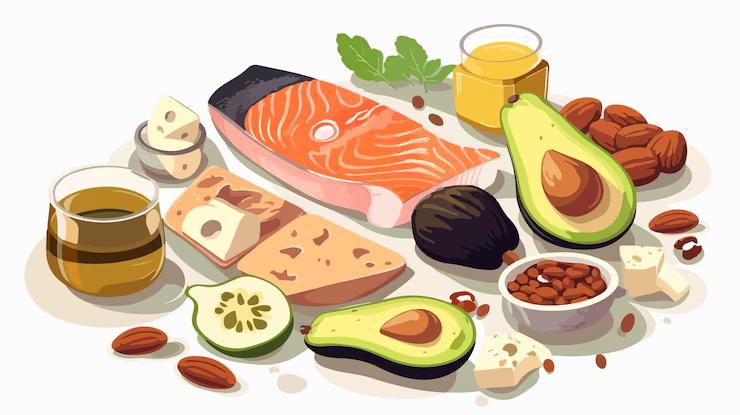
Healthy fats are a key element in creating balanced and satisfying superfood meals. They play a vital role in nutrient absorption, hormone production, brain function, and satiety. Unlike unhealthy trans fats, healthy fats from natural sources offer long-term health benefits, including reducing inflammation and supporting heart health.
You can incorporate healthy fats into your superfood meals through ingredients like avocados, nuts, seeds, olive oil, and fatty fish such as salmon. These sources are rich in omega-3 fatty acids, monounsaturated fats, and antioxidants. A drizzle of extra virgin olive oil on your salad or a spoonful of chia seeds in your smoothie adds both flavor and nutrition.
Using healthy fats wisely ensures your superfood meals are not only nourishing but also deeply satisfying. The key is moderation—just a small amount can enhance taste and boost the bioavailability of fat-soluble vitamins like A, D, E, and K, making your meals more effective and delicious.
Healthy fats support cell function, reduce inflammation, and keep you full longer.
Superfood Fats:
Avocados – rich in monounsaturated fats and potassium.
Nuts (almonds, walnuts) – contain omega-3s and protein.
Seeds (chia, flax, hemp) – fiber and healthy fats.
Olive oil – antioxidant-rich, anti-inflammatory.
Example Meal:
Avocado Toast with Chia and Hemp Seeds
Sourdough bread
Smashed avocado
Chia, hemp, and a drizzle of olive oil
Sprinkled sea salt & chili flakes
Benefits: Skin health, brain function, energy boost.
Spice it Up with Medicinal Herbs and Spices
Herbs and spices do more than add flavor—they bring powerful health benefits to your superfood meals. Many medicinal herbs and spices are rich in antioxidants, anti-inflammatory compounds, and essential nutrients that support overall wellness. Incorporating them into your meals transforms everyday dishes into therapeutic, healing foods.
Turmeric, ginger, garlic, cinnamon, and cumin are some of the most effective options. Turmeric contains curcumin, known for its anti-inflammatory and immune-boosting effects. Ginger aids digestion, garlic supports heart health, and cinnamon helps regulate blood sugar. These ingredients blend seamlessly into soups, stews, dressings, and grain bowls—making your superfood meals both flavorful and functional.
By spicing up your superfood meals, you enhance their nutritional power without adding extra calories or unhealthy ingredients. Even a small sprinkle can make a big impact on your health. Plus, the aromatic appeal of herbs and spices keeps your meals exciting and satisfying, encouraging long-term healthy eating habits.
Spices aren’t just for flavor — many have medicinal properties.
Super Spices:
Turmeric – anti-inflammatory, antioxidant.
Ginger – digestive aid, immune booster.
Cinnamon – balances blood sugar.
Garlic – antibacterial, heart healthy.
Example Meal:
Turmeric Lentil Soup
Red lentils
Carrots, onions, garlic
Coconut milk
Turmeric, cumin, ginger
Benefits: Supports immunity, reduces inflammation, aids digestion.
Supercharge with Berries and Fruit
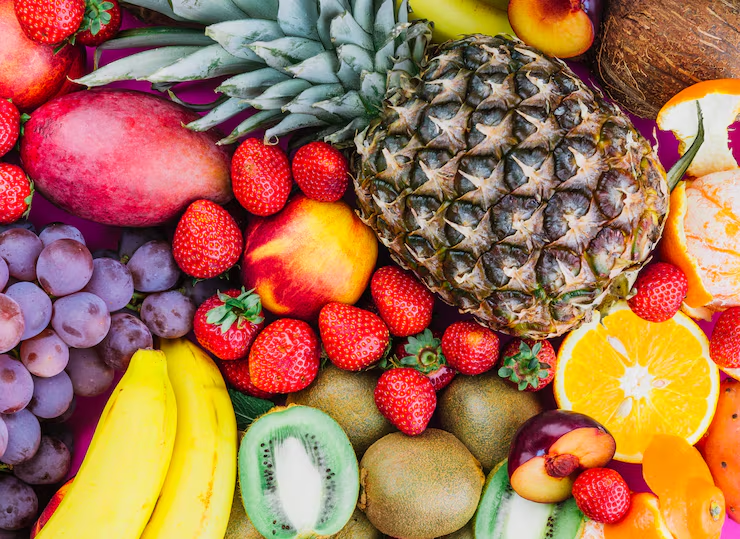
Berries and fruits are natural sweeteners packed with antioxidants, vitamins, and fiber, making them essential in superfood meals. Their rich color signals powerful plant compounds like anthocyanins and flavonoids that support immune health, brain function, and skin vitality. Adding a variety of fruits boosts both the flavor and nutritional value of your meals.
Blueberries, strawberries, acai, goji berries, bananas, and pomegranate seeds are among the top choices. These fruits are easy to incorporate into superfood meals—toss them into salads, blend them into smoothies, or sprinkle them over yogurt or chia pudding. Their natural sweetness also helps curb sugar cravings in a healthy way.
Including berries and fruits in your superfood meals not only enhances taste but also delivers a concentrated source of nutrients. Whether eaten fresh or frozen, these vibrant ingredients elevate your dishes while helping your body fight inflammation, improve digestion, and maintain energy throughout the day.
Berries are packed with antioxidants and vitamins. They’re great for breakfast, snacks, or dessert.
Top Picks:
Blueberries
Acai berries
Goji berries
Pomegranate
Bananas (prebiotic benefits)
Example Meal:
Berry Chia Pudding
Chia seeds soaked in almond milk
Topped with mixed berries and a drizzle of honey
Benefits: Antioxidants, skin health, supports weight management.
Stay Hydrated with Superfood Drinks
Staying hydrated is just as important as eating well, and superfood drinks are a great way to complement your superfood meals. These beverages are not only refreshing but also packed with vitamins, antioxidants, and natural compounds that support digestion, energy levels, and overall health. Proper hydration helps flush out toxins and keeps your body functioning optimally.
Superfood drinks can include green smoothies, detox juices, matcha tea, golden milk, or coconut water. Ingredients like spinach, cucumber, lemon, ginger, and turmeric provide anti-inflammatory and cleansing benefits. A well-crafted smoothie or juice pairs perfectly with your superfood meals, enhancing both hydration and nutrient intake in one go.
Incorporating superfood drinks into your daily routine ensures you’re fueling your body inside and out. Whether enjoyed with a meal or as a refreshing snack, these drinks support your wellness goals and keep you energized. They’re a delicious and easy way to round out your superfood meals experience.
Don’t underestimate the power of hydration. Superfood drinks keep you energized, reduce bloating, and flush toxins.
Ideas: Green smoothies with spinach, cucumber, lemon
Matcha tea – metabolism booster and antioxidant-rich
Golden milk with turmeric and almond milk
Coconut water – natural electrolyte source
Example Drink:
Detox Green Juice
Cucumber
Celery
Lemon
Ginger
Apple
Spinach
Benefits: Hydration, improved digestion, skin glow.
Additional Tips for Creating Superfood Meals
Meal prep in advance to make it easier to stay consistent.
Keep a rotation of superfoods to prevent dietary boredom.
Pair flavors mindfully – e.g., berries + dark chocolate for a superfood dessert.
Buy seasonal and local to ensure freshness and nutrient density.
Use superfood powders (spirulina, maca, acai) for added boost.
Conclusion
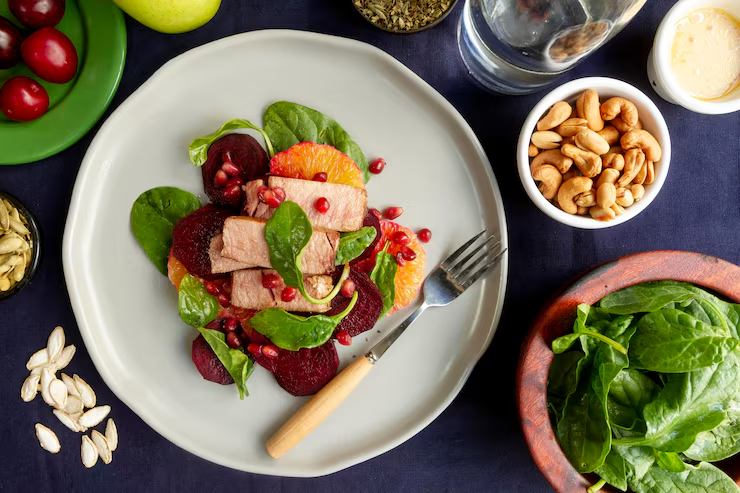
Superfood meals are more than a passing trend — they represent a sustainable approach to nutrition that supports long-term wellness. These meals are packed with powerful ingredients that help your body function at its best, naturally boosting immunity, energy, and mental clarity. Whether you’re aiming for weight loss, better digestion, or disease prevention, superfood meals offer an effective, flavorful path to a healthier you.
The beauty of superfood meals lies in their simplicity. You don’t need a complete dietary overhaul to benefit. Start with small, manageable changes like swapping refined grains for quinoa or adding leafy greens and healthy fats to your plate. Over time, these nutrient-dense ingredients begin to nourish your body from the inside out.
Begin with one recipe, one ingredient, or one new habit. As these small changes stack up, they’ll form the foundation of a lasting, vibrant lifestyle rooted in clean eating and real, wholesome superfood meals.
FAQs
Q1. What are superfood meals ?
Superfood meals are dishes made using nutrient-dense ingredients like leafy greens, berries, seeds, whole grains, and healthy fats. These meals are designed to boost energy, immunity, and overall health.
Q2. Are superfood meals suitable for weight loss ?
Yes, superfood meals are excellent for weight loss because they are rich in fiber, protein, and healthy fats, which promote satiety and help reduce unhealthy cravings.
Q3. Can I prepare superfood meals on a budget ?
Absolutely. You can make superfood meals affordable by choosing local, seasonal produce and buying grains, seeds, and legumes in bulk.
Q4. How often should I eat superfood meals ?
Ideally, aim to include superfood meals in your diet daily. Start by adding one meal a day and gradually increase as you get comfortable.
Q5. Are superfood meals only for vegetarians or vegans ?
No, superfood meals can be customized for any diet. They work well with plant-based, vegetarian, or omnivorous lifestyles.
